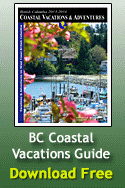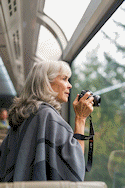Alpine
Fir
Alpine Larch
Amabilis Fir
Balsam Poplar/Black Cottonwood
Big Leaf Maple
Black Spruce
Choke Cherry
Pacific Dogwood
Douglas Fir
Douglas Maple
Engelmann Spruce
Garry Oak
Grand Fir
Black Hawthorn
Lodgepole Pine
Mountain Alder
Mountain Hemlock
Pacific Willow
Paper Birch
Ponderosa Pine
Red Alder
Rocky Mountain Juniper
Sitka Spruce
Tamarack Larch
Trembling Aspen
Vine Maple
Western Hemlock
Western Larch
Western Red Cedar
Western White Pine
Western Yew
Whitebark Pine
White Spruce
Yellow Cedar
Animals
Birds
Fish
Wildflowers
Trees
Survival
Parks
Trails







|
British Columbia Outdoor Wilderness Guide  |

BIGLEAF MAPLE
acer macrophyllum
- The
Bigleaf Maple is also known as Broadleaf Maple,
Oregon Maple
- The
Bigleaf Maple is well named as its leaves are enormous
with stems often as long as the leaf
UNIQUE
FEATURES:
- The
Bigleaf Maple is the largest and fastest growing
maple in Canada
- The
Bigleaf Maple has a narrow crown supported by a
branch-free stem for half its length when grown
in the forest
- When
grown in the open, a few large, spreading branches
support a broad crown
- Seeds
are food for small mammals and birds
- Twigs
of the Bigleaf Maple are food for elk and deer
- Often
draped in mosses
LOCATION:
- The
Bigleaf Maple is found in the southwest corner of
British Columbia
- Low
to mid elevations
- Coarse,
gravelly, moist soils such as found near river,
lake and stream edges
SIZE:
- The
Bigleaf Maple grows up to 36 metres
FLOWERS:
- Small,
greenish-yellow purple when young. The pollen cones
are yellow in colour
- About
3 mm across
- Hang
in clusters
FRUIT:
- Two
winged seeds that are joined as the base
- 3
to 6 cm, hairy
- Often
stay on the tree after leaves have fallen
LEAVES:
- Bigleaf
Maple leaves are thick, large (15 to 30 cm across),
five to seven lobes
- Shiny,
dark green on top, paler on the bottom
- Turn
yellow then brown in the fall
- Will
bleed a milky, sticky juice from the broken end
of a picked leaf
BARK:
- Greyish-brown
- As
the tree ages becomes shallowly grooved
WOOD
CHARACTERISTICS:
- Close
grain, moderate hardness
USES:
- Modern
- furniture, interior finishing, musical instruments,
flowers can be used in salads
- Traditional
- wood: dishes, pipes, clothing hooks, paddles;
inner bark: baskets, rope and whisks; young shoots:
eaten; sap: type of maple syrup
|
|

Follow Us On Facebook
List of BC Adventure
Advertisers
Site Info
Advertise With Us
Awards
About Us
Contact Us
Free Vacation Guides
BC Vacation Guides
Coastal Vacations
Thompson Okanagan
EcoTourism
Fishing Vacations
Guest Ranch Guide
Romantic Getaways
Wilderness Vacations
Winter Vacations
The Rockies Guide
Login




|

